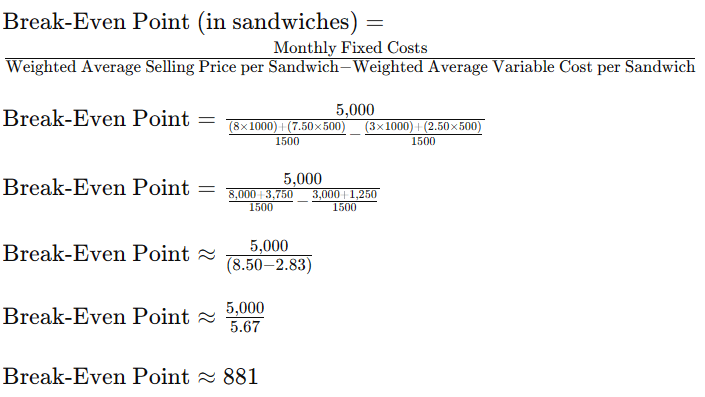Are you considering opening a restaurant specializing in mouthwatering shawarma sandwiches? And what if you want to expand your menu beyond shawarma? Adding other sandwich options can attract a wider range of customers and increase revenue potential. Let’s delve into a comprehensive feasibility study to help you make informed decisions.
Market Analysis:
- Target Market: Identify the demographics of your target market such as age, income level, and location. Shawarma sandwiches often appeal to a wide range of people, including young professionals, students, and families.
- Competitor Analysis: Research existing shawarma restaurants in the area to understand their offerings, pricing, and market positioning. Assess their strengths and weaknesses to identify opportunities for differentiation.
- Demand Analysis: Estimate the demand for shawarma sandwiches in your area based on population density, consumer preferences, and trends in dining out.
Product Offering:
- Menu Development: Develop a menu focused solely on shawarma sandwiches, offering a variety of fillings, sauces, and sides to cater to different tastes.
- Quality Assurance: Ensure high-quality ingredients and consistent preparation methods to maintain customer satisfaction and loyalty.
- Pricing Strategy: Determine competitive yet profitable pricing based on ingredient costs, overhead expenses, and market expectations.
Financial Projections:
- Startup Costs: Estimate the initial investment required for equipment, furnishings, renovations, licenses, permits, and initial inventory.
- Fixed Costs: Calculate monthly fixed costs such as rent, utilities, insurance, salaries, and marketing expenses.
- Variable Costs: Determine the cost of ingredients per sandwich and other variable expenses like packaging and cleaning supplies.
- Break-Even Analysis: Calculate the number of sandwiches you need to sell each month to cover your fixed and variable costs.
Operational Considerations:
- Supply Chain Management: Establish relationships with reliable suppliers to ensure consistent access to quality ingredients at competitive prices.
- Staffing Requirements: Determine the number of employees needed for food preparation, customer service, and cleaning based on expected sales volume.
- Customer Experience: Develop efficient processes for order taking, food preparation, and service to minimize wait times and enhance the overall dining experience.
Financial Projections Example:
- Startup Costs: $50,000
- Monthly Fixed Costs: $5,000
- Variable Costs per Sandwich: $3
- Average Selling Price per Sandwich: $8
With the above figures, let’s calculate the break-even point:

So, you need to sell 1,000 shawarma sandwiches each month to break even.
Adjusting the Study for Other Sandwiches:
- Product Offering Expansion:
- Menu Expansion: Introduce a variety of sandwich options including falafel, chicken, beef, vegetarian, and vegan.
- Ingredient Procurement: Procure additional ingredients for the expanded menu.
- Pricing Strategy: Adjust pricing for each sandwich type based on costs and market demand.
- Financial Projections Adjustment:
- Variable Costs: Calculate variable costs for each sandwich type.
- Average Selling Price per Sandwich: Determine the selling price for each sandwich type.
- Break-Even Analysis: Recalculate the break-even point considering the sales mix of different sandwich types.
- Example Adjusted Break-Even Calculation: Let’s assume the variable cost per sandwich for non-shawarma sandwiches is $2.50, and the average selling price is $7.50.
With the updated figures:

So, with the updated menu offering, you need to sell approximately 881 sandwiches (a mix of shawarma and other types) each month to break even.
Opening a restaurant specializing in shawarma sandwiches presents a promising venture, particularly with the potential for menu expansion to include other sandwich options. Conducting a thorough feasibility study, encompassing market analysis, financial projections, and operational considerations, is crucial for making informed decisions. By understanding the target market, assessing competition, and accurately projecting costs and sales, you can effectively plan for success in the competitive restaurant industry, ensuring profitability while meeting customer demand and preferences.